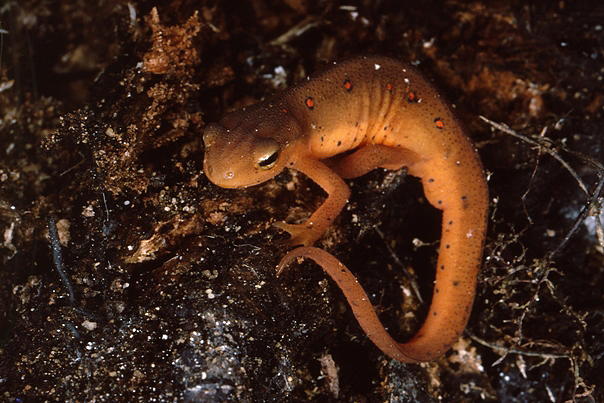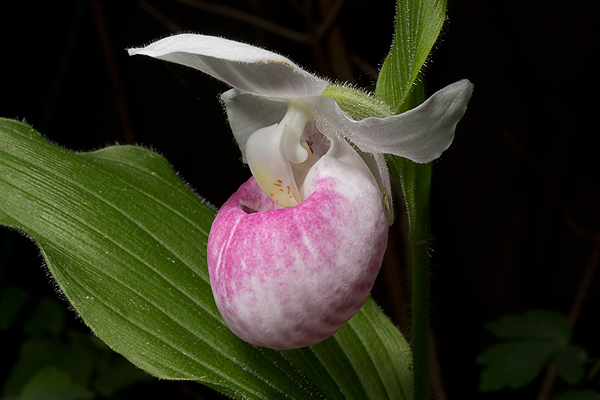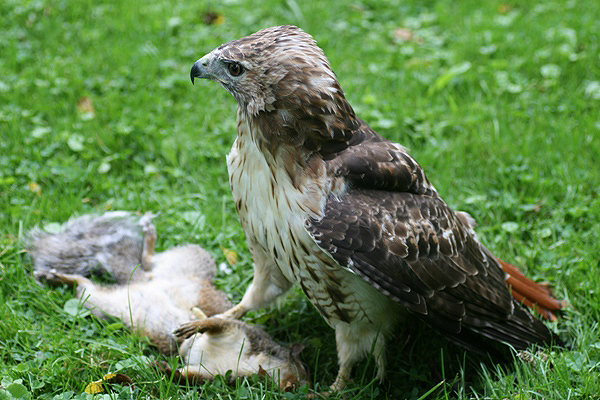Our wildlife needs your help.
| |
 |
|
| |
The immature form of the Eastern Newt is called a red eft. |
|
More than 50% of the energy from the sun that is available to living things on earth is ending up in one species, Homo sapiens, before being dispersed to the environment as heat energy.
As the world's economies grow due to population growth and an increase standard of living, the human species continues to increase its use of this limited supply of energy and that leaves less to go round for all the other animals that we share the planet with. Mostly, we do this by occupying more land and leaving less space for wildlife to coexist with us. The rate of species extinction is greater now than at any time in human history.
One of the greatest challenges of the 21st century is how we prevent mass extinction while our global population surges to 10 billion. You can make a difference by creating a garden that is both beautiful and ecofriendly.
| |
 |
|
| |
To appreciate the beauty of nature in all its diversity, we must take the time to look at the details. The more we observe, the greater the existence value we will place on all plants and animals that form a part of our biosphere. |
|
I am appealing to gardeners to devote some (if not all) of their garden space to conserving wildlife in order to help prevent many animals from becoming extinct in the future. We need to maintain biodiversity because we rely on nature to provide a range of ecological services for us. Many humans also feel a strong affinity for nature and place an existence value on wildlife. If more wildlife comes to your garden because you provided native plants for pollinators, you will not only enjoy being in your backyard more, but you will gain a great sense of satisfaction from your contribution to nature.
| |
 |
|
| |
Now not every plant produces flowers are spectacular as a Showy Lady's Slipper, but the native plants of North America are as beautiful as anywhere else in the world. A garden of native plants will support wildlife and look beautiful as well. |
|
1) By planting native plants and replacing exotic plants, you can set up the food chains needed to support amphibians, reptiles, mammals and birds that live in your area. Buy your plants from native plant nurseries.
2) Your garden is an area that is (or should be) free of pesticides. By growing native plants in the correct conditions, plant diseases can be kept to a minimum which eradicates the need for chemical treatment.
3) By replacing lawns with either flowers, shrubs, trees or grassland, you can turn your ecologically poor land into a rich biodiverse habitat that requires no fertiliser. No parcel of land is too small to do this.
4) By choosing appropriate plants and by using appropriate irrigation or diversion techniques, you can minimise water use.
5) By avoiding ploughing, digging or any other soil disturbance it is possible to encourage an ecologically healthy soil.
6) By using permaculture techniques, you can incorporate crop plants into your garden while encouraging wildlife at the same time.
7) By providing shelter and food, your garden will become more than just a bunch of flowers. It will become a place to watch animals interact both with the plants and each other. Most children love watching wildlife.
| |
 |
|
| |
Your squirrel population provides a good food source for red tailed hawks. When you are feeding birds to bring them into your garden, squirrels will inevitably arrive too which in turn will feed higher order consumers. Supporting food chains is the most important goal of wildlife gardening. |
|
The information on this website is for anybody living in Eastern Canada or North Eastern United States or around the great lakes. Using over 900 pictures, many aspects of wildlife gardening are covered including descriptions of about 200 species of plants that you might consider placing in your garden. All pictures are the property of the website owner and cannot be reproduced for commercial purposes without permission. For non-commercial purposes, cut and paste as much as you want, but remember to do the honourable thing by citing this website.
This site is a work in progress.



